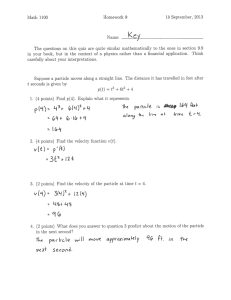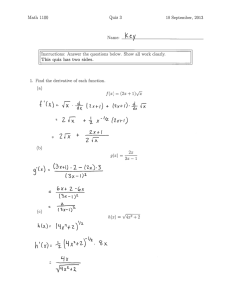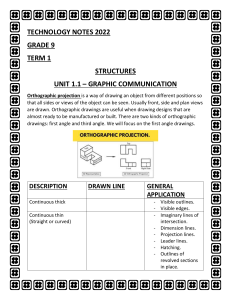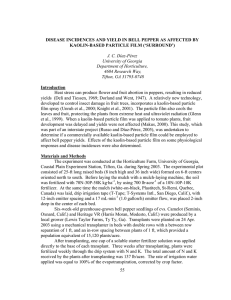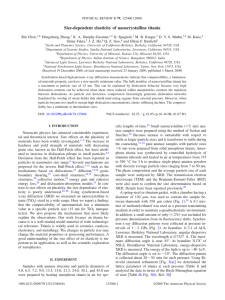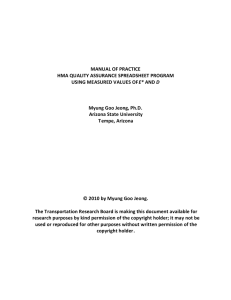EM 388F: Fracture Mechanics HW#1 (due Wednesday, January 23, 2008)
advertisement
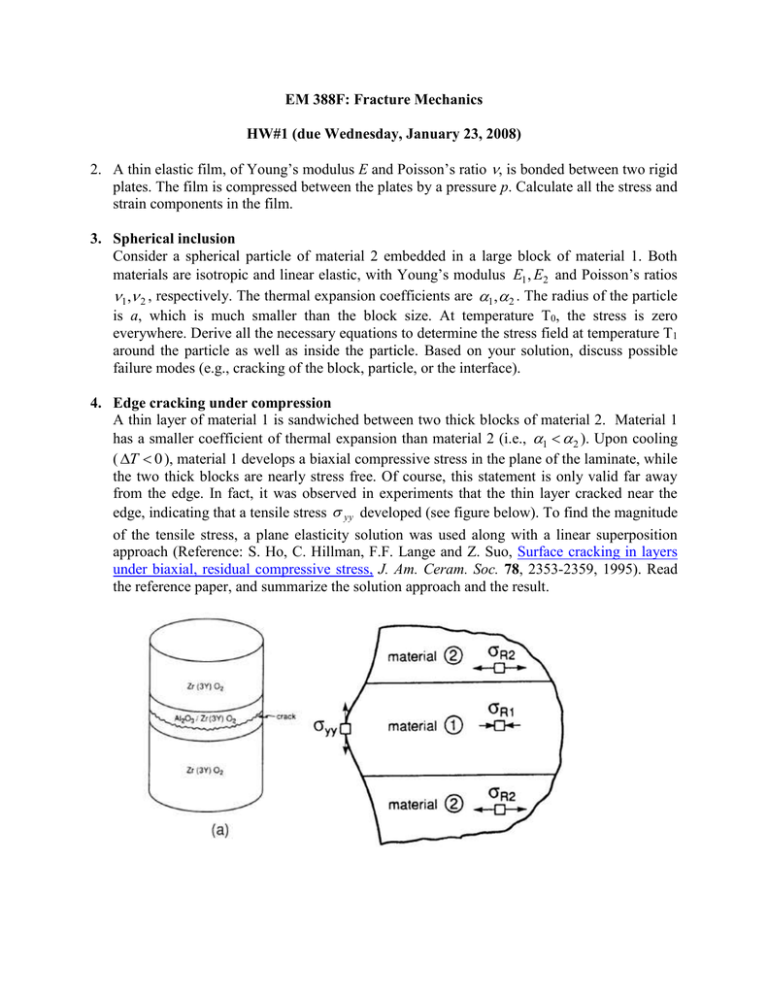
EM 388F: Fracture Mechanics HW#1 (due Wednesday, January 23, 2008) 2. A thin elastic film, of Young’s modulus E and Poisson’s ratio , is bonded between two rigid plates. The film is compressed between the plates by a pressure p. Calculate all the stress and strain components in the film. 3. Spherical inclusion Consider a spherical particle of material 2 embedded in a large block of material 1. Both materials are isotropic and linear elastic, with Young’s modulus E1 , E2 and Poisson’s ratios 1, 2 , respectively. The thermal expansion coefficients are 1, 2 . The radius of the particle is a, which is much smaller than the block size. At temperature T0, the stress is zero everywhere. Derive all the necessary equations to determine the stress field at temperature T1 around the particle as well as inside the particle. Based on your solution, discuss possible failure modes (e.g., cracking of the block, particle, or the interface). 4. Edge cracking under compression A thin layer of material 1 is sandwiched between two thick blocks of material 2. Material 1 has a smaller coefficient of thermal expansion than material 2 (i.e., 1 2 ). Upon cooling ( T 0 ), material 1 develops a biaxial compressive stress in the plane of the laminate, while the two thick blocks are nearly stress free. Of course, this statement is only valid far away from the edge. In fact, it was observed in experiments that the thin layer cracked near the edge, indicating that a tensile stress yy developed (see figure below). To find the magnitude of the tensile stress, a plane elasticity solution was used along with a linear superposition approach (Reference: S. Ho, C. Hillman, F.F. Lange and Z. Suo, Surface cracking in layers under biaxial, residual compressive stress, J. Am. Ceram. Soc. 78, 2353-2359, 1995). Read the reference paper, and summarize the solution approach and the result.



